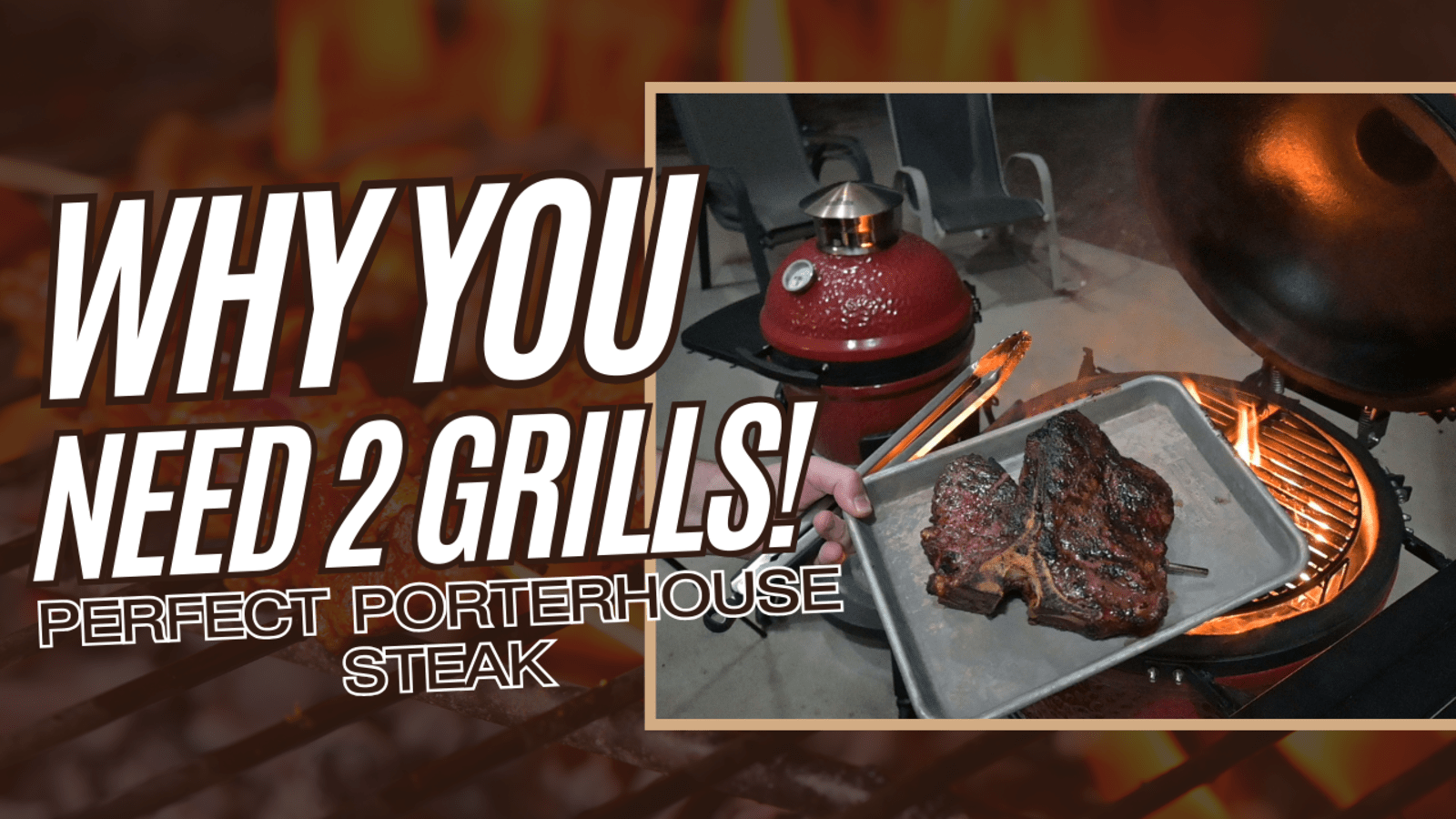
Why You Need Two Grills for the Perfect Porterhouse Steak
Published: May 07, 2025 (Last Modified: May 07, 2025)🔥 Why You Need Two Grills for the Perfect Porterhouse Steak
(In Case Your Significant Other Asks)
“Don’t You Already Have a Grill?”
Yes. You probably do.
But if you’re aiming for a steakhouse-caliber porterhouse—the kind with a seared crust, a warm red center, and that deep, smoky flavor—one grill just isn’t enough.
Here’s why using two grills (in this case, a Kamado Joe Classic III and a Kamado Joe Jr.) can unlock the best cook of your life.
The Two-Grill Philosophy
Grilling is about control. With one grill, you’re juggling searing and indirect cooking zones, possibly shifting coals, adjusting vents, or tweaking gas burners.
With two grills, each tool has a job:
- Grill #1: The Searing Station
(We used the Kamado Joe Jr.)
→ Delivers ripping hot heat for that essential crust. - Grill #2: The Primary Cooker
(We used the Kamado Joe Classic III)
→ Finishes the steak gently, evenly, and without flare-ups.
You’re not just cooking—you’re orchestrating.
📽️ Watch the Method in Action
🎥 Watch on YouTube: Why You NEED Two Grills for the Perfect Porterhouse (Kamado Joe Style)
In this video, we walk you through:
- 🔥 High-temp sear on the Joe Jr.
- 🕐 Indirect finish on the Classic III
- 🥩 Slicing into the juiciest, crispiest porterhouse you've ever seen
🧰 Gear You’ll Need
- Grills:
- Kamado Joe Jr. (searing zone)
- Kamado Joe Classic III (finishing zone)
Accessories:
- Hardwood lump charcoal (natural wood, no fillers)
- Thermapen or other instant-read thermometer
- Long-handled tongs
- Optional: GrillGrates for clean sear lines
- Resting tray or board with foil
🥩 Step-by-Step: The Two-Grill Porterhouse Method
Here’s the exact method we used—no guesswork, no gimmicks.
🔪 1. Prep the Steak
- Choose a 1.5–2 inch thick porterhouse, well marbled
- Season generously with salt & pepper (or your favorite rub)
- Let sit at room temp for 30–45 minutes
🔥 2. Fire Up Both Grills
Kamado Joe Jr.:
- Load with lump charcoal
- Open vents fully
- Target 600°F+ for direct searing
Kamado Joe Classic III:
- Set for indirect cooking with deflector plate
- Target 275–350°F
🔥 3. Sear on the Jr.
- Place steak over direct flame
- Sear 1–2 minutes per side
- Pull when internal temp hits 110–115°F
- Optional: rotate halfway through for grill marks
🔁 4. Transfer to the Classic
- Move steak to indirect zone
- Close lid and monitor with thermometer
- Finish to:
- 125–130°F = Medium-rare
- 130–135°F = Medium
- Finish time: 8–12 minutes depending on thickness
⏲️ 5. Rest and Serve
- Remove from grill
- Rest 5–10 minutes under foil
- Slice and serve with butter, finishing salt, or sauce
✅ Why This Works
- 🔥 No more guessing on grill zones
- 🧠 One grill gets hot, the other stays smart
- 🥩 Perfect crust + perfect center, every time
- 🔁 Built-in backup if anything goes wrong
💬 Final Thoughts
This isn’t about showing off or buying more gear.
It’s about grilling with intention. With two grills, you get:
- Better results
- Smoother workflow
- More confidence every time you lift the lid
So next time someone asks why two grills are running for one steak?
You’ll know exactly what to say:
“Because I don’t mess around with meat.”
📩 Want a printable version of this method or a downloadable recipe card? Drop your email or let us know in the comments!
